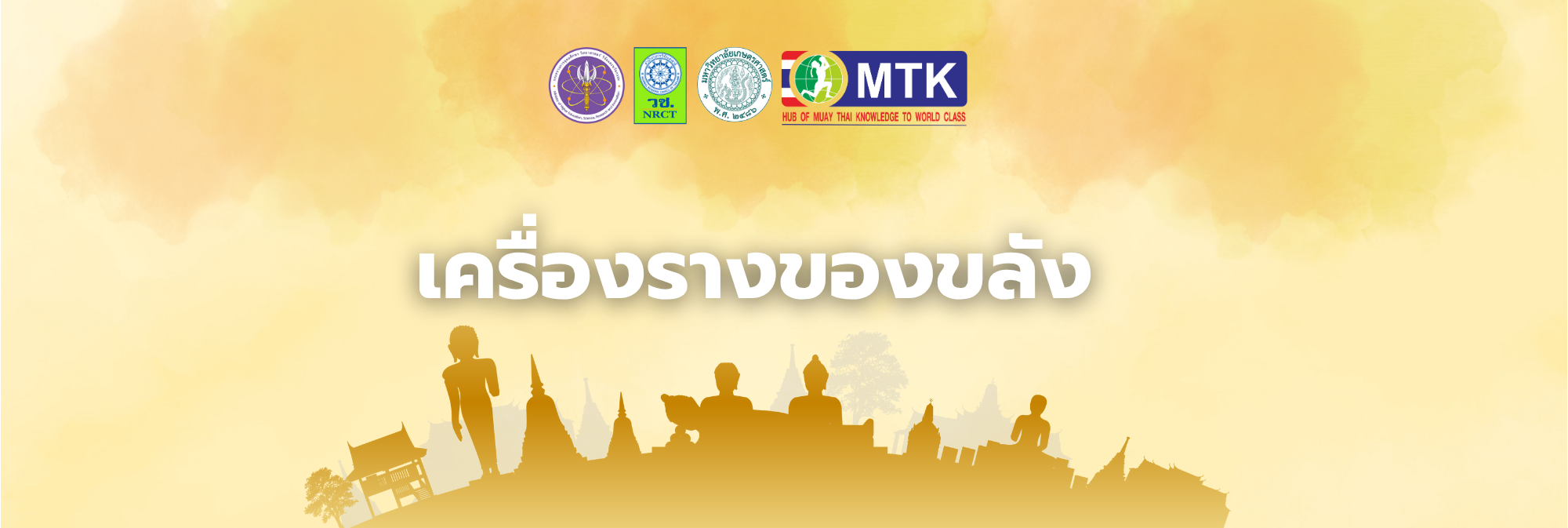
เครื่องรางของขลัง
เครื่องรางของขลังเป็นสิ่งที่อยู่เคียงคู่สังคมมนุษย์มาช้านานอาจเรียกได้ว่าอยู่คู่กับพัฒนาการของมนุษย์ทุกชาติพันธุ์ เพราะในเรื่องของความเชื่อนั้นมีความสัมพันธ์โยงใยกับความเป็นมนุษย์ตั้งแต่เกิดจนตาย ความเชื่อเรื่องเครื่องรางของขลังจึงเปรียบคล้ายกับเกราะป้องกันภัยทางจิตใจอันเกิดขึ้นจากการกระทำนอกเหนือธรรมชาติที่มนุษย์ไม่สามารถควบคุมได้ด้วยเหตุผลทางวิทยาศาสตร์ เครื่องรางของขลังเป็นเรื่องที่ลึกลับและบางอย่างก็หาคำตอบไม่ได้ เป็นสิ่งที่คนเราเชื่อถือต่อกันมาตั้งแต่สมัยโบราณ เป็นศาสตร์หนึ่งที่ยังคงมีอยู่ในยุคสมัยที่เทคโนโลยีก้าวหน้าไปมาก แต่เรื่องของความเชื่อก็ยังมีอยู่ในตำราพิชัยสงครามโดยเครื่องรางของขลังที่นักรบสมัยโบราณจะมีติดตัวเป็นมงคลเป็นเครื่องยึดเหนี่ยวทางจิตใจ ซึ่งมีด้วยกันหลายชนิดและมีความเชื่อต่อสิ่งนั้นๆ จะเห็นได้จากการสืบทอดศาสตร์ต่างๆ เกี่ยวกับวัตถุมงคลเครื่องรางของขลังสืบทอดกันมา การใช้เป็นเครื่องรางสำหรับคุ้มครองป้องกันในการออกศึกสงครามของคนสมัยโบราณและเป็นความเชื่อทางไสยศาสตร์อย่างหนึ่งซึ่งการใช้เครื่องรางขลังมีปรากฏหลักฐานในเสภาเรื่อง “ขุนช้างขุนแผน” ที่ได้กล่าวถึงการแต่งกายของตัวละครสำคัญและเมื่อมีการออกรบทุกครั้งจะมีการผูกหรือสวมเครื่องรางชนิดต่างๆ ติดตัวไปด้วยเสมอ เช่น การแต่งกายของขุนแผนและพลายงามก่อนออกไปรบดังนี้ (ชัชวาล วูวนิช, ๒๕๕๑)
“ครานั้นขุนแผนแสนสนิท เรืองฤทธิ์ลือจบพิภพไหว
กับลูกชายพรายงามทรามวัย พอดึกได้ยามสามตามตำรา
ฟ้าขาวดาวดวงสะกดแจ่ม พระจันทร์แรมรีบดับลงลับหล้า
พ่อลูกจัดแจงแต่งกายา นุ่งผ้าม่วงดำประจำกาย
สะเอวคาดราดคดสีดำ คล้องประคำตะกรุดทองทั้งสองสาย
ใส่เสื้อยันต์ลงองค์นารายณ์ เข็มขัดขมองพรายคาดกายพลัน
ประจงจับประเจียดประจุพระ โพกศีรษะทะมัดทะแมงดูแข็งขัน
ทั้งพ่อลูกผัดผงที่ลงยันต์ แล้วเสกจันทร์เจิมหน้าสง่างาม”
จะเห็นได้ว่าเครื่องรางของขลังที่ปรากฏมีหลายอย่าง เช่น ราดคด ประคำ ตะกรุด เสื้อยันต์ ประเจียด และผง โดยใช้เป็นเครื่องยึดเหนี่ยวจิตใจในยามออกศึกสงคราม ซึ่งตามพจนานุกรมฉบับ ราชบัณฑิตสถาน พ.ศ.๒๕๔๒ ได้ให้ความหมายของเครื่องรางของขลังไว้ว่า “เครื่องราง คือ ของที่นับถือว่าป้องกันอันตราย ยิงไม่ออก ฟันไม่เข้า เช่น ตะกรุด ผ้ายันต์ เหล็กไหล และของขลัง จึงถือว่าเครื่องราง ของขลังเป็นภูมิปัญญาอย่างหนึ่งของคนไทยที่มีอํานาจศักดิ์สิทธิ์ที่เชื่อกันว่าอาจบันดาลให้สําเร็จได้ตามที่ตั้งใจไว้ ซึ่งจะมีการอนุรักษ์และเก็บรักษาไว้เป็นอย่างดี
การแบ่งประเภทเครื่องรางของขลัง
เครื่องรางของขลัง สามารถแบ่งตามหมวดหมู่ ได้ดังนี้
๑. เครื่องของขลังที่เป็นวัตถุที่เกิดขึ้นโดยธรรมชาติ ได้แก่ คดหิน รากไม้ แก้วตาแมว เขี้ยวหมูตัน เขี้ยวเสือ เขาวัว เขาควาย เหล็กไหล
๒. เครื่องรางของขลังที่เป็นสิ่งประดิษฐ์ขึ้นโดยฝีมือมนุษย์ ได้แก่ ตะกรุด ผ้าประเจียด เบี้ยแก้ งาแกะ ไม้แกะ ผ้ายันต์ มงคลสวมศีรษะหรือคล้องคอ มีดหมอ ปลัดขิก ลูกสะกด ลูกอม แหวนพิรอด เชือกคาดเอว ชูชก ปลาตะเพียนเงิน ปลาตะเพียนทอง นางกวัก
เครื่องรางของขลังสำหรับนักมวยไทย
การแข่งขันชกมวยไทยในอดีตถึงปัจจุบันยังมีความเชื่อเรื่องเครื่องรางของขลังมาโดยตลอด ซึ่งนักมวยไทยจะมีการสวมและผูกเครื่องรางของขลังชนิดต่างๆ เพื่อให้เกิดความเป็นสิริมงคล เกิดความโชคดีประสบความสำเร็จในการแข่งขัน อีกทั้งยังเป็นกฎกติกาของกีฬามวยไทยในปัจจุบันอีกด้วยซึ่งเครื่องรางของขลังสำหรับนักมวยไทย ประกอบด้วย
๑. มงคล
ทำด้วยสายสิญจน์ หรือผ้าดิบที่เกจิอาจารย์เป็นผู้เขียนอักขระหัวใจมนต์ คาถาและเลขยันต์ ถักหรือม้วนพันด้วยด้าย หรือด้ายสายสิญจน์ ห่อหุ้มด้วยผ้าซึ่งผ่านพิธีกรรมจากครูบาอาจารย์ผู้ทรงวิทยาคมทำเป็นวงสำหรับสวมศีรษะโดยรวบเป็นหางยาวไว้ข้างหลังซึ่งมงคลถือเป็นเครื่องรางให้ความสิริมงคลและคุ้มครองนักมวยให้พ้นอันตราย ซึ่งในสมัยก่อนระหว่างการชกหากมงคลหลุดจากศีรษะ ฝ่ายตรงข้าม จะหยุดชกเพื่อให้ทำการสวมมงคลก่อนจึงจะชกต่อไป โดยจะไม่มีการซ้ำเติมในขณะเก็บมงคล นักมวยแต่ละภูมิภาคจะมีมงคลเป็นเอกลักษณ์ของตนเองยกเว้นมวยไทยไชยาที่ใช้ผ้าประเจียดสวมศีรษะแทนมงคลเนื่องจากมงคลไม่ใช่เครื่องประดับแต่เป็นของศักดิ์สิทธิ์ การสวมมงคลของนักมวยจะให้ครูมวยเป็นผู้สวมให้โดยแต่ละสำนักจะบริกรรมคาถากำกับไปด้วยและที่สำคัญนักมวยจะไม่ถอดประเจียด หรือมงคลออกขณะแข่งขันกัน หลังจากไม่ได้ใช้มงคลจะเก็บไว้บนที่สูง เช่น บนหัวนอน ห้องพระ เพื่อเป็นการบูชาให้คาถาอาคมอยู่ตลอดไป (สำนักงานคณะกรรมการวัฒนธรรมแห่งชาติ, ๒๕๔๐)
๒. ประเจียด
ใช้ผ้าขาวบางเนื้อดี หรือเรียกว่า ผ้าสาลู หรือใช้ผ้าดิบสีขาวหรือสีแดง ตัดเป็นสามเหลี่ยมลงเลขยันต์มหาอำนาจ ชาตรีมหายันต์ ลงอักขระโบราณ เช่น ภาษาขอม อักษรเทวนาครี หรืออาจนำตะกรุดแผ่นบรรจุไว้ด้วยก่อนนำเข้าพิธีพุทธาภิเษก เพื่อเพิ่มพูนความศักดิ์สิทธิ์ โดยพับเข้าเป็นแถบหรือม้วนเป็นวงเพื่อสะดวกต่อการใช้ ผูกแขนหรือศีรษะสำหรับนักมวยนั้นมีมงคลสวมศีรษะอยู่แล้วก็จะนำผ้าประเจียดมารัดต้นแขนเพื่อเป็นสิริมงคล
สำหรับนักมวยไทยไชยา นิยมสวมผ้าประเจียดเพียงอย่างเดียว เรียกว่า ประเจียดหัว กับประเจียดแขน เมื่อศิษย์จะทำการชกมวย ครูบาอาจารย์ท่านจะนำประเจียดทั้งสองชนิดมาเสกเป่าด้วย พระคาถา พร้อมทั้งเจิมประแจะเสกลงที่หน้าผากก่อนการสวมประเจียดหัว ประเจียดแขนให้กับศิษย์ของเริ่มการต่อสู้ (จัตุชัย จำปาหอม, ๒๕๕๐)
๓. พิรอด
ในสมัยโบราณพิรอดทำขึ้นจากกระดาษสาและผ้าตราสังศพ นำมาแผ่เป็นริ้ว ๆ ลงอักขระพระคาถาต่าง ๆ แล้วฟั่นให้เป็นเกลียว มีลักษณะคล้ายกับประเจียด ซึ่งในปัจจุบันทำจากผ้าลงยันต์มาม้วน เป็นเส้น แล้วชโลมด้วยน้ำข้าว เพื่อให้ผ้ายันต์ม้วนตัวกันแน่นเป็นเส้นก่อนนำด้ายสายสิญจน์มามัดทับผ้ายันต์ไว้ให้สวยงาม ถักขึ้นเป็นรูปพิรอดและเข้าพิธีปลุกเสก หลังจากนั้นทำการทดสอบความขลังด้วยการ เผาไฟ วงใดไฟไม่ไหม้จะนำไปลงล้างน้ำและปิดทองเพื่อความสวยงาม ตัวพิรอดมีหลายรูปแบบ ทั้งแหวนพิรอด พิรอดสวมต้นแขน หรือพิรอดมงคลสวมหัว (สงการ ศรีพนมและธวิคชัย เพิ่มผล, ๒๕๔๗)
๔. ขวานฟ้า
มีลักษณะเป็นหินมีรูปร่างคล้ายขวาน นักมวยคาดเชือกในสมัยโบราณถือเป็นเครื่องรางที่จะใส่ไว้ในซองมือระหว่างพันหมัดด้วยด้ายดิบ ก่อนการตีมวยคนโบราณเชื่อกันว่า ขวานฟ้ามีฤทธานุภาพอันศักดิ์สิทธิ์ จะพบได้บริเวณที่มีฟ้าผ่า ลงดินและคนมีบุญบารมีเท่านั้นที่จะขุดพบ นอกจากนี้ยังใช้เป็นเครื่องมือรักษาโรคกดที่บวมและบดเป็นยา โดยเชื่อกันว่าหากเอาขวานฟ้าไว้ในยุ้งข้าว ข้าวจะไม่พร่องวางขวานฟ้าไว้ที่ลานตากข้าวเปลือก ไก่ป่าจะไม่เข้ามาจิกกิน บางจังหวัดในภาคกลางใช้ไล่ผีโดยให้เอาขวานฟ้าซุกไว้ใต้ที่นอนคนที่มีผีเข้า นอกจากนี้ในบ่อนไก่บางแห่งยังใช้ขวานฟ้าบด เพื่อใช้รักษาตาไก่ที่แตกเป็นแผล
ในวิชาโบราณคดีกล่าวถึงขวานฟ้าว่าเป็นขวานหิน แหล่งที่พบมักมีร่องรอยของหลักฐานด้านสังคมเกษตร และการใช้ภาชนะดินเผา จึงเรียกชุมชนของมนุษย์ที่อาศัยอยู่ในยุคนี้ว่า มนุษย์ยุคหินใหม่ หรือยุคสังคมเกษตรเริ่มต้น ขวานหินพบเห็นอยู่ทั่วไปในทุกภาคของประเทศไทย มีหลายขนาดแยกออกได้เป็น ๒ แบบ คือ ขวานหินขัดและขวานหินกะเทาะ มีอายุประมาณ ๔-๖ พันปี
๕. ตะกรุด
ในสมัยโบราณใช้โลหะ “ตะกั่วสังขวานร” รีดเป็นแผ่นบาง ๆ ลงเลขยันต์ศักดิ์สิทธิ์ คาถาอาคม นำมาม้วนเป็นวง และปลุกเสกด้วยกำลังจิต ตามกรรมวิธีโบราณของเกจิอาจารย์แต่ละท่าน ใช้ร้อยเชือกผ่านรูตรงกลางแล้วนำมาห้อยคอหรือคาดเอว โดยหวังผลทางเมตตามหานิยม แคล้วคลาดและคงกระพันชาตรี กันเสนียดจัญไร ซึ่งถือได้ว่าเป็นเครื่องรางของขลังที่ให้อิทธิคุณครบทุกด้าน ตะกรุดมีหลายขนาด หากเป็นตะกรุดขนาดใหญ่ใช้ห้อยคอหรือเอวเพียงชิ้นเดียว เรียกว่า ตะกรุดโทน (สงการ ศรีพนมและธวิคชัย เพิ่มผล, ๒๕๔๗)
๖. พิสมร
มีลักษณะเป็นแผ่นโลหะหรือใบลานรูปสี่เหลี่ยมลงเลขยันต์ที่มีรูร้อยสายแต่โดยมาก ไม่ม้วนให้กลมอย่างตะกรุด ซึ่งผ่านพิธีกรรมเดียวกันกับตะกรุด
สรุปท้ายบท
เครื่องรางของขลังจึงเป็นสิ่งยึดเหนี่ยวจิตใจ เสริมพลังใจ ความเชื่อมั่นก่อนการชกและระหว่าง การชก เพื่อให้ประสบความสำเร็จในการแข่งขันของนักมวยไทย โดยในปัจจุบันความเจริญก้าวหน้าทางวิทยาศาสตร์และเทคโนโลยี ทำให้ความเชื่อในเรื่องไสยศาสตร์ เครื่องรางของขลังลดน้อยลง แต่เครื่องรางของขลังยังอยู่คู่กับกีฬามวยไทยและกลายเป็นเอกลักษณ์ที่สำคัญของมวยไทยจนถึงปัจจุบัน
 ภาพที่ ๑ มงคลที่มา : ต่อศักดิ์ แก้วจรัสวิไล, ๒๕๕๑
ภาพที่ ๑ มงคลที่มา : ต่อศักดิ์ แก้วจรัสวิไล, ๒๕๕๑
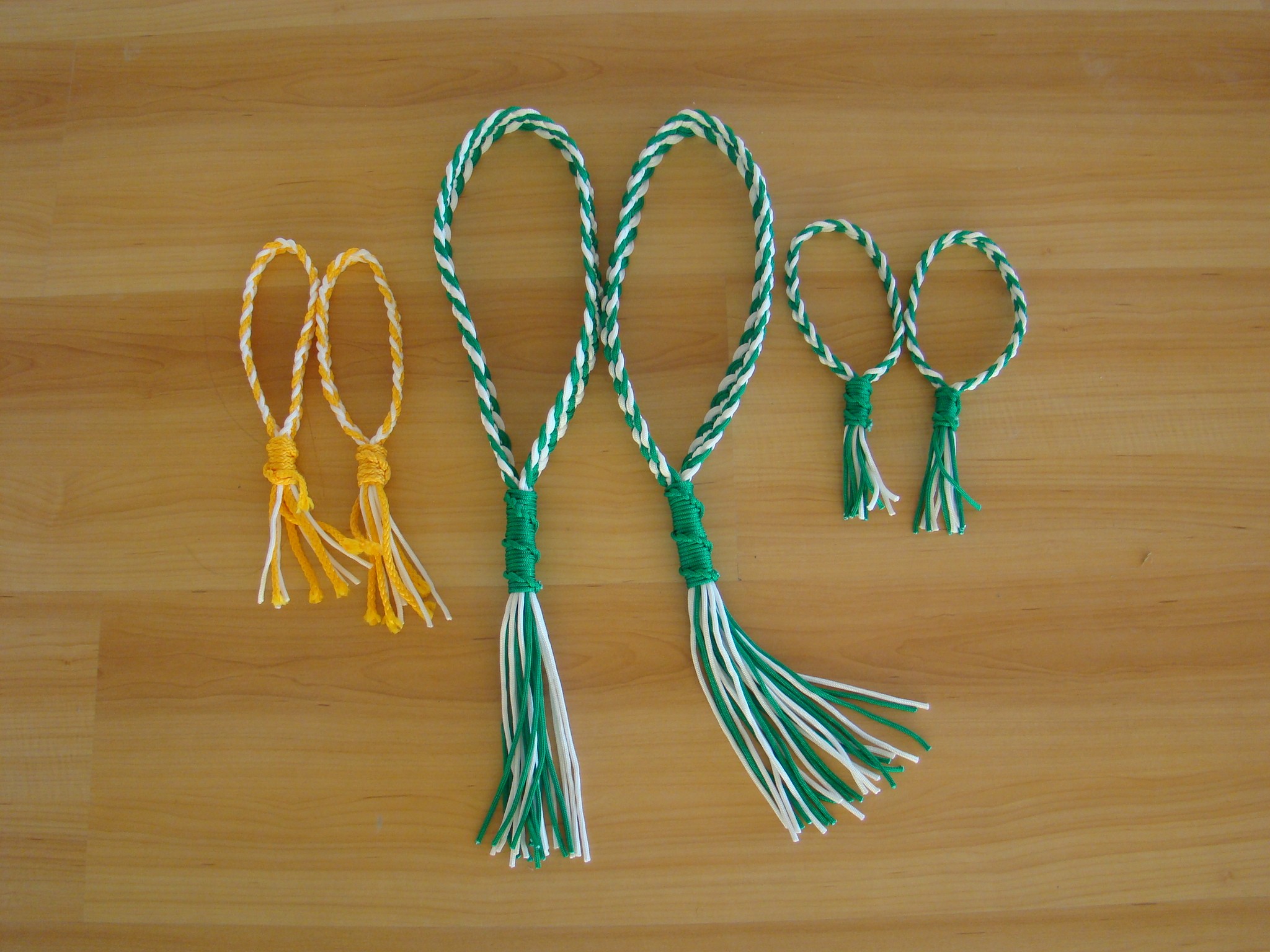 ภาพที่ ๒ ประเจียด ที่มา : ต่อศักดิ์ แก้วจรัสวิไล, ๒๕๕๑
ภาพที่ ๒ ประเจียด ที่มา : ต่อศักดิ์ แก้วจรัสวิไล, ๒๕๕๑
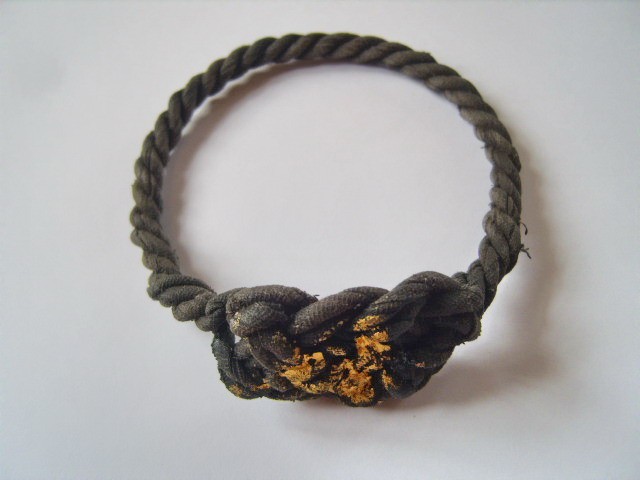
ภาพที่ ๓ พิรอด ที่มา : ชัชวาล วูวนิช, ๒๕๕๑
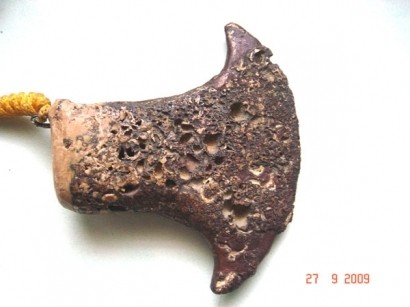
ภาพที่ ๔ ขวานฟ้า
ที่มา : ชัชวาล วูวนิช, ๒๕๕๑
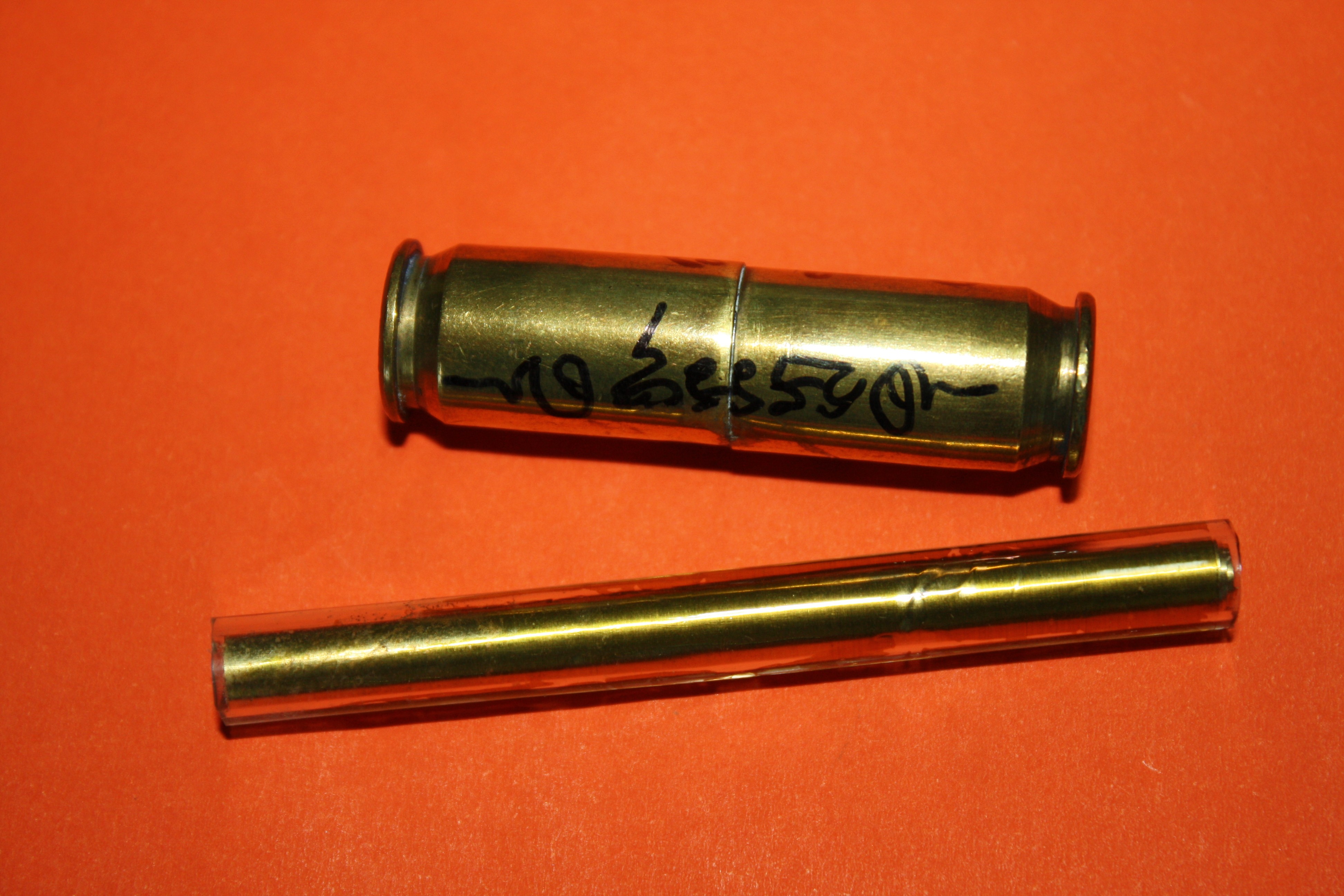 ภาพที่ ๕ ตะกรุด
ภาพที่ ๕ ตะกรุด
ที่มา : ต่อศักดิ์ แก้วจรัสวิไล, ๒๕๕๑
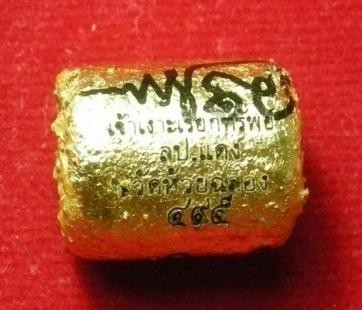
ภาพที่ ๖ พิสมร
ที่มา : ชัชวาล วูวนิช, ๒๕๕๑
Sacred Amulets and Talismans
Sacred amulets and talismans have long been intertwined with human societies, accompanying the spiritual and cultural evolution of all civilizations. Beliefs in supernatural forces are fundamentally linked to the human condition from birth to death. Talismans, therefore, serve as psychological armor against threats that transcend human understanding or scientific explanation. These sacred items, often enveloped in mysticism and inexplicability, have been passed down through generations and remain relevant even in the age of advanced technology.
Such beliefs are embedded in ancient military treatises, where warriors would carry talismans for spiritual fortification and auspicious protection in battle. This continuity is reflected in the transmission of esoteric knowledge related to sacred objects and occult practices. A prominent literary reference can be found in the traditional Thai epic Khun Chang Khun Phaen, where characters such as Khun Phaen and Phlai Ngam are described donning various sacred items before engaging in warfare:
“At that moment, the mighty Khun Phaen, Whose fame shook the earth,
Alongside his beloved son Phlai Ngam, At the third watch of the night, as prescribed by the scriptures,
Beneath a sky lit by a single bright star, And as the waning moon disappeared beyond the horizon,
Father and son adorned themselves, Wearing black-purple garments symbolic of valor.
A black-threaded waist sash girded their loins, Rosary beads and twin golden takrut were worn,
A sacred shirt inscribed with Narayana’s yantra embraced the body, While the khamong phrai belt was fastened tightly.
They carefully tied prajiad and chanted sacred verses, Bound the forehead with ritual cloth in readiness,
Then smeared pong yant (blessed powder) upon the face And invoked the divine moon for fortune and protection.”
From this, one can observe various talismanic items: rad khot (ritual sash), phra kham (rosary), takrut (metal scroll amulet), yant shirt (sacred inscribed garment), prajiad (ritual armbands), and pong yant (sacred powder). Each item functioned as a spiritual anchor during times of war.
According to the Royal Institute Dictionary (1999), the term talisman is defined as an object believed to confer protection, such as rendering the wearer impervious to bullets or blades—examples include takrut, yantra cloth, lek lai (mythical metal), among others. These items, regarded as sacred and powerful, reflect Thai folk wisdom and are typically preserved with great reverence.
Classifications of Sacred Amulets and Talismans
Sacred amulets and talismans can be categorized into two main types:
1. Naturally Occurring Objects – These include khod stone (whorl stones), sacred roots, kaew ta maeo (cat’s eye gemstone), boar tusks, tiger fangs, bull and buffalo horns, and lek lai (mystical metal).
2. Man-Made Talismans – These are created by skilled artisans or spiritual masters and include:
o Takrut (scroll amulets)
o Prajiad (ritual cloth armbands or headbands)
o Bia kae (charmed cowrie shells)
o Carved ivory and wood amulets
o Yantra cloth and ceremonial headgear
o Ritual daggers (meed mor), palat khik (phallic charms), luk sakot (metal or wooden pellets), sacred candies (luk om), piraud rings, ritual belts, figures like Chuchok, and symbolic fish like the silver and golden barb (pla tapian), or Nang Kwak (goddess of wealth).
Amulets and Talismans in Muay Thai
From the past to the present, the tradition of wearing sacred amulets remains an integral part of Muay Thai. Fighters wear or tie various talismans on their bodies to bring auspiciousness, luck, and victory. In fact, some talismans are also integrated into the formal regulations of modern Muay Thai. The most commonly used talismans in Muay Thai include:
1. Mongkhon (มงคล)
A sacred headpiece made from consecrated thread or cloth, inscribed with mystical scripts, incantations (mantra), and yantra diagrams. It is wrapped or braided and ritually empowered by a master teacher (Kru). The mongkhon serves not as mere ornamentation but as a vessel of spiritual protection and blessing.
Traditionally, if a mongkhon fell off during a fight, the bout would be paused to allow its replacement—no opponent would take advantage of the moment. Each Muay Thai school or regional style has its unique mongkhon, except for Muay Thai Chaiya, which substitutes a prajiad headband in place of the mongkhon. After use, mongkhon are stored in elevated places like altars or near sacred spaces to retain their mystical power
2. Prajiad (ประเจียด)
Ritual cloth strips made from white cotton or muslin (known as pha salu), inscribed with yantra of invincibility (Chatri Maha Yant) and written in ancient scripts such as Khmer or Devanagari. These are sometimes combined with a small takrut inside before being consecrated in a sacred ceremony (phutthaphisek). Fighters wear the prajiad around the biceps or, in the Chaiya style, also as a headband.
Before a bout, a Kru will recite blessings while anointing the fighter’s forehead and binding the prajiad to the student, imbuing them with spiritual power.
3. Piraud (พิรอด)
Originally crafted from funeral shrouds or sacred paper inscribed with mystical scripts and twisted into cords. Today, they are usually made from yantra-inscribed cloth, rolled and sealed with consecrated thread. To test their potency, they are burned—those that resist flames are considered genuinely empowered. Piraud come in many forms, such as rings, armbands, or headgear.
4. Kwan Fah (Sky Axe) (ขวานฟ้า)
A stone resembling an axe, believed to form at sites struck by lightning. In ancient rope-bound Muay Thai (muay khao cheuak), such stones were sewn into the handwraps for added protection. Folklore holds that only the spiritually endowed could find them. The kwan fah was also believed to possess medicinal and agricultural powers, used to prevent crop loss, repel spirits, and even treat injuries.
Archaeological studies identify these as polished or chipped Neolithic stone axes, dating back 4,000–6,000 years, found across Thailand.
5. Takrut (ตะกรุด)
Thin metal scrolls (traditionally lead alloy called takua sangkhawanon) inscribed with sacred yantra and incantations, then rolled into a cylindrical shape and empowered by meditation. Fighters may wear takrut around the waist, neck, or arms. A larger version, worn singly, is called takrut tone. Its mystical properties include invulnerability (kongkraphan), charm (metta), and protection from evil.
6. Phitsamorn (พิสมร)
A rectangular amulet made from metal or palm leaf, bearing mystical inscriptions similar to takrut, but not rolled. It is worn using a string threaded through a designated hole and carries similar spiritual significance.
Conclusion
Sacred amulets and talismans serve as spiritual anchors that enhance a fighter’s confidence and mental resilience before and during Muay Thai bouts. Although modern science and technology have led to a general decline in belief in the supernatural, sacred objects remain deeply embedded in Muay Thai culture. Today, they continue to function not only as spiritual tools but also as enduring symbols of the art’s cultural heritage and identity.
